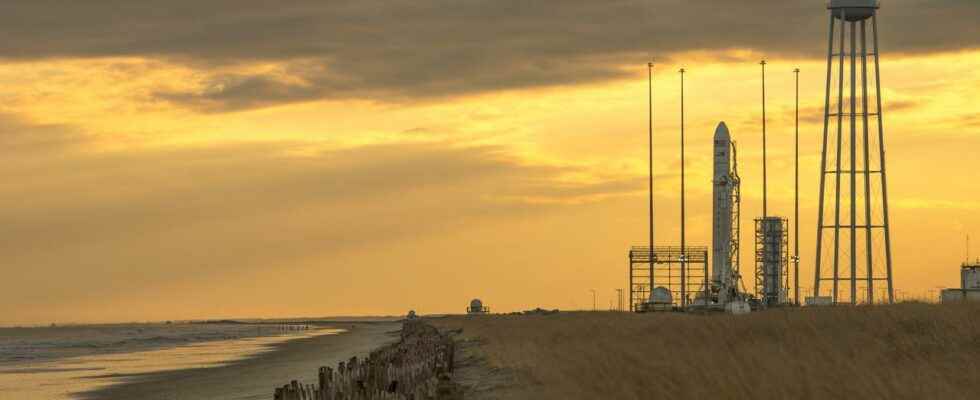The embargo on Russian rocket engines made the situation urgent. Northrop Grumman is therefore joining forces with Firefly to replace the first stage of its Antares launcher and develop a long-term solution for Cygnus. And this time it will be a pitcher” made in USA »…
NASA should thus keep its two suppliers.
Fewer engines, more problems
Since Russia invaded Ukraine last February, the space sector has been the subject of trade in economic and technological sanctions. Thus, Russia has decided to stop exporting its rocket engines to American companies United Launch Alliance and Northrop Grumman.
The first claims to have enough in reserve for the end of the career of its Atlas V launcher, but Northrop, which sends its Cygnus cargo ship twice a year to refuel the International Space Station, only has enough engines for the next two flights. These are scheduled for fall 2022 and spring 2023, after which the Antares 230 launcher will find itself stuck on the ground, due to a lack of RD-181 engines…
Yesterday, August 8, Northrop Grumman communicated on its new plan to ensure regular rotations in the years to come (and potentially until 2030).
Still Falcon 9!
For the short term first, Cygnus will lift off with SpaceX’s Falcon 9. We can guess the reluctance of Northrop Grumman to choose this solution for three flights, but no other is immediately available. Indeed, all Atlas V flights are already booked, as are all Vulcan flights, and neither Vulcan nor New Glenn (which are the only two American launchers announced for 2023 capable of carrying Cygnus) have flown for the moment.
SpaceX therefore remained… An intermediate choice which will also make NASA cringe, the American agency wishing to permanently have redundancy. However, if Falcon 9 is (for one reason or another) grounded next year, it will stop the Dragon cargo flights like those of Cygnus. In 2024-25, however, Northrop Grumman hopes to be able to resume Antares flights in a new “330” version, thanks to a partnership with Firefly.
Think about the medium and long term
This joint development agreement will take place in two stages. First, Antares 330 will keep the same general architecture, and only its first floor will change. The body will be made of composite materials and made with the Firefly technique, while it will be equipped with 7 Miranda engines, powered by kerosene and liquid oxygen. A choice that is both conservative in order to be able to keep the majority of the installations at the Wallops launch site in Virginia, but also innovative, because Firefly has not completed its Miranda engines which are under development.
Indeed, the current generation operated by Firefly, the Reaver engine, is not powerful enough. Antares 330 should improve the overall performance of Northrop Grumman’s launch vehicle with possible gains for Cygnus, such as more cargo ships bound for the ISS, or the possibility of aiming for more distant orbits (such as the resupply of the future orbital station lunar, the Gateway). Its main mission will probably remain confined primarily to sending Cygnus.
Northrop and Firefly in the pack!
The framework agreement between the two companies also mentions the future development of a new joint launcher between Northrop Grumman and Firefly, in the ” medium-class “. Which is not illogical, given that each of these companies has already participated in this type of project, whether in the recent past (Northrop Grumman with its Omega launcher) or in the present (Firefly with its Beta launcher).
Depending on the horizon that the two partners choose, however, they risk finding themselves faced with fierce competition, both nationally and internationally. Indeed, we will find on this horizon the Neutron launcher from Rocket Lab, Terran R from Relativity Space, Vulcan from ULA, a potential launcher from ABL Space… Not to mention Falcon 9 and even Starship, if the technical and financial objectives around this launcher come to fruition.
Source :Reuters

5